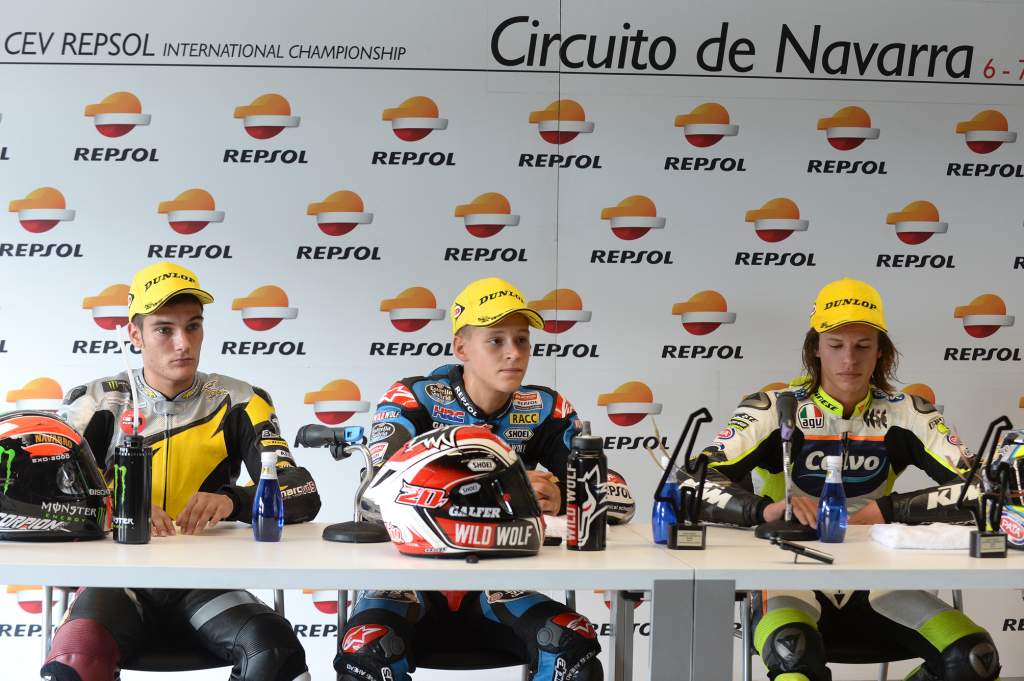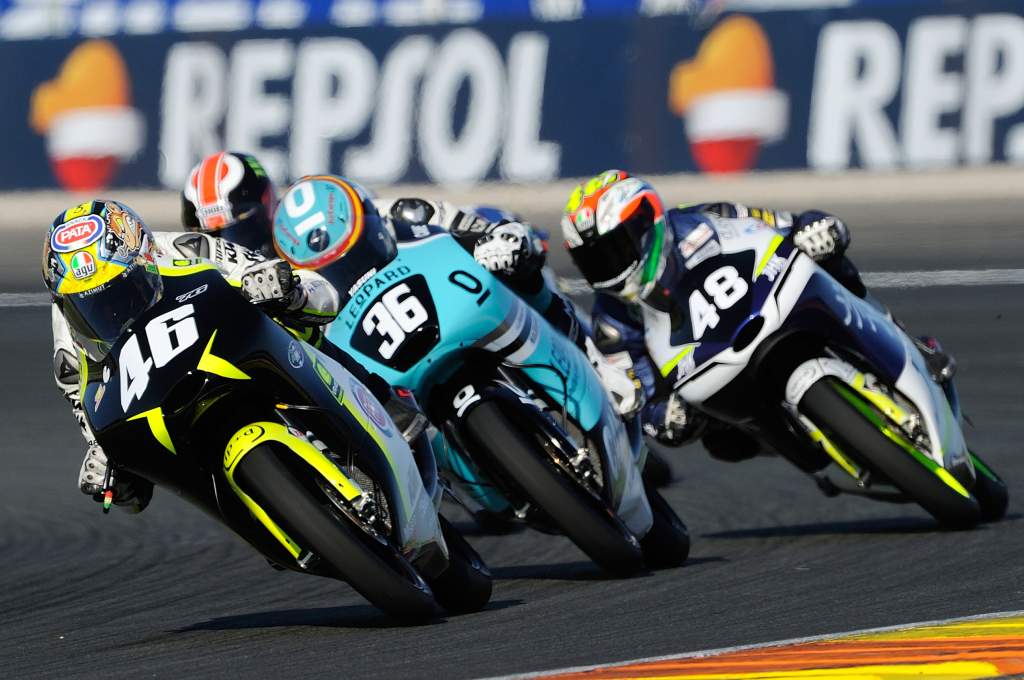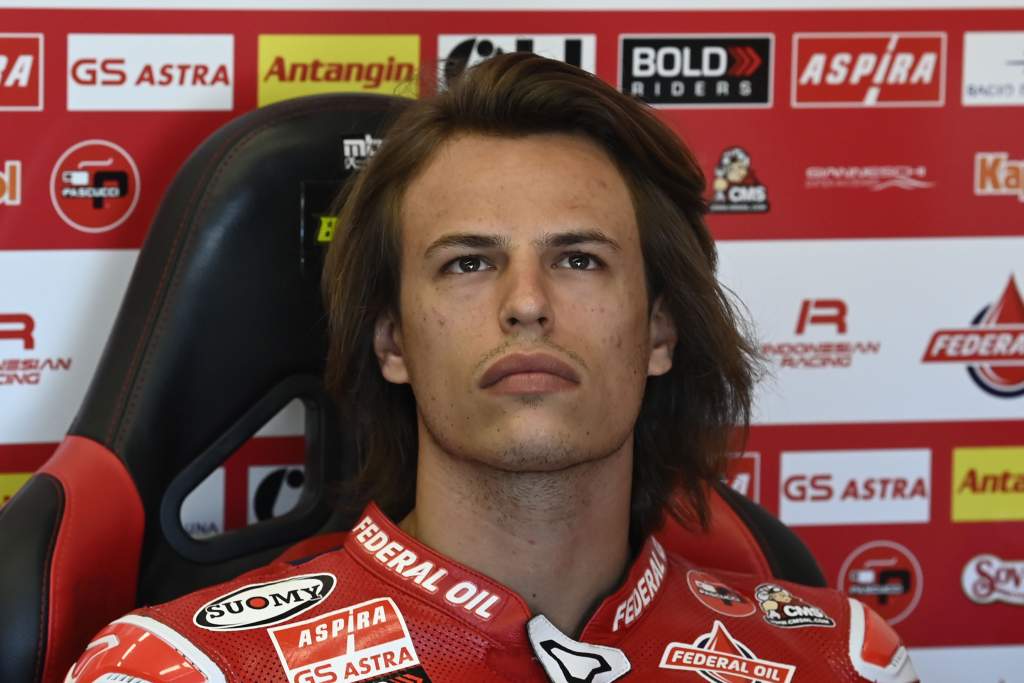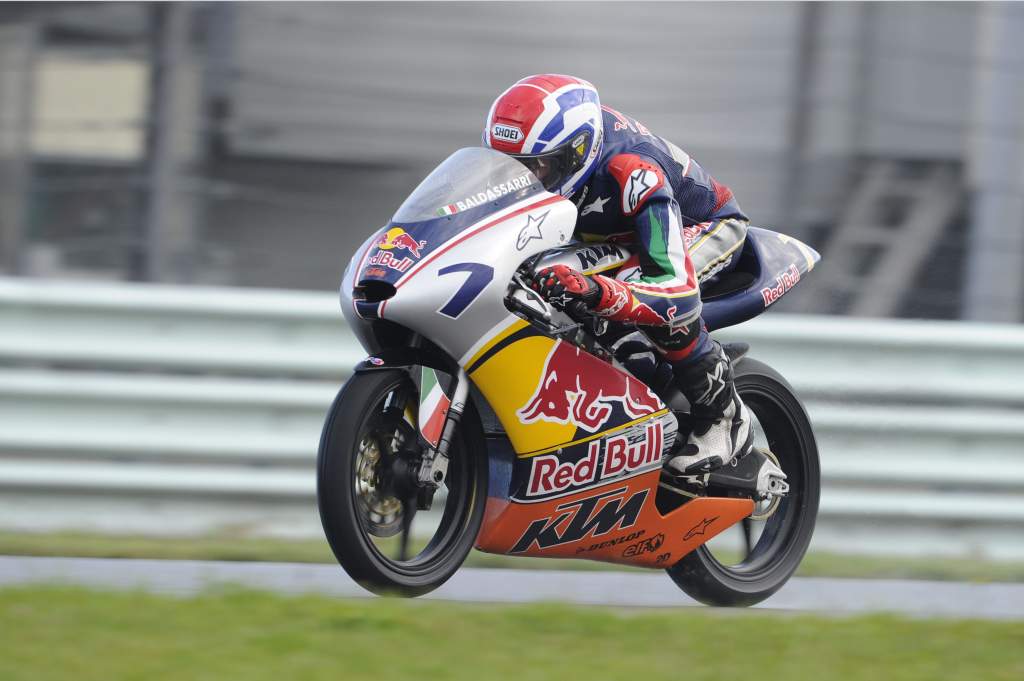until Abu Dhabi Autonomous Racing League

When Fabio Quartararo first appeared in grand prix motorcycle racing, he was tipped as the sport’s next big thing, thanks to an impressive record that led him to Moto3 at only 15 years old.
But it took five difficult seasons before he jumped to MotoGP and established himself as a frontrunner, which begs the question: are there other Quartararos out there?
The French teenager (pictured below in 2014 between Jorge Navarro and Nicolo Bulega) chalked up an incredible record before he was even old enough to shave, winning the Spanish CEV Moto3 championship not once but twice – the first and only rider in history to have done so.

He graduated to Moto3 proper in 2015 through a rule change designed specifically to allow him to move up a year early but things quickly took a left turn, with injury, team politics and eventually second-tier machinery all combining to make it look like his chances of realising his potential had vanished.
In the end, it was only a gamble by the newly-formed Petronas Yamaha MotoGP team for 2019 that gave him a lifeline, with the Malaysian squad taking a risk by signing Quartartaro after established names like Dani Pedrosa and Jorge Lorenzo had all failed to agree terms.
Three years later, Quartararo is MotoGP champion. But should his story act as a cautionary tale to team bosses and managers about the risks of writing off a young talent too soon?
He isn’t the only youngster who arrived in Moto3 bursting with talent only to fail to utilise it effectively, asking the question of whether some others simply needed the same chances extended to Quartararo to showcase what they too could have achieved.
One of those names that immediately comes to mind is none other than Bulega, the rider who succeeded Quartararo as the CEV Moto3 champion, the series renamed to the Moto3 Junior World Championship by 2015.
Bulega came into that series as the next big thing in Valentino Rossi’s VR46 Academy project and won a tightly-fought battle in his second season, beating future stars like 2020 Moto3 champion Albert Arenas and 2020 MotoGP champion Joan Mir.

Bulega moved to Moto3 for 2016 with Rossi’s Team Sky and made a strong start, too, taking his maiden podium only four races in at Jerez, ending his debut season in a respectable seventh overall.
Yet things quickly went wrong for him in 2017 as he came up against the biggest enemy of many a racer – teenage growth.
Simply put, Bulega sprung up, and was quickly too tall for the lightweight bikes of Moto3.
An eventual graduation to Moto2 followed in 2019 but it by then seemed to be too little too late, and the Italian never make it back to podium contention.

Leaving Moto2 for the World Supersport paddock in 2022 and Ducati’s nascent new middleweight class production racer, it remains to be seen whether he’ll be able to adapt to big bikes successfully or not, but one thing is sure; the route to 1000cc bikes will be easier for him there than it would have been in the MotoGP paddock.
He’s not the only sometime VR46 rider to be making that kind of career transition for 2022 either, though, with Lorenzo Baldassarri making the same switch, albeit with MV Agusta not Ducati.
A Red Bull Rookies Cup winner (pictured below) in 2011, Baldassarri was another hotly-tipped name – and one who showed his potential in the middleweight class in 2019, as well, by winning three out of the opening four Moto2 races of the year.

Yet everything went wrong for him shortly after that. Eventually finishing the season in seventh, he returned to the podium only one more time in his remaining two seasons in Moto2, at the opening round of 2020 – before his height too got the better of him, standing (similarly to Bulega) at over 180cm – tall enough to be the biggest rider on the MotoGP grid had he made it there.
In fact, his tale is an even more cautionary one than that of Bulega given that Baldassarri was able to display his potential in larger capacity grand prix machinery. A proven race winner, even if it was inconsistently, there are plenty of comparisons to be made to Quartararo’s own career in the class that really means that what could have been for Baldassarri will always remain a question.
Of course, those two examples are only some of the many names who have never quite managed to capitalise on their grand prix potential despite impressive careers in the smaller classes.
That’s partly been because of a MotoGP grid stuffed with old names of late, but with the retirement of the likes of Rossi, Pedrosa and Lorenzo, we’re now witnessing something of a changing of the guard – and with the success displayed by Quartararo, maybe it means that teams will be more willing to take some risks in the future.

